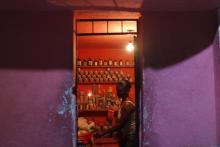Guidance Notes to Performance Standards on Environmental and Social Sustainability
IFC. 2012. Performance Standards on Environmental and Social Sustainability. Washington, DC: International Finance Corporation. [#2284]
Toolkits for Public-Private Partnerships
The World Bank, as well as other organizations, has developed a number of toolkits related to evaluating and creating public private infrastructure partnerships. These toolkits gather together checklists, guidelines and resources for different types of projects.
This site gathers and organizes PPP toolkits for easy access by interested parties.
Energy-Efficient Street Lighting PPPs
Gender & Water and Sanitation Projects
Gender & Transport Projects
Integrating Gender Across the PPP Project Cycle
Multinational Development Banks (MDBs) as well as bilateral and national development banks and many other leading development organizations have a growing commitment to finance and support infrastructure projects and programs that incorporate gender considerations. They have developed a number of guidelines, practical tools, policies, and manuals that are based on best practice and aim to facilitate a gender-inclusive approach.
Gender & Energy Projects
Integrating Gender Across the PPP Project Cycle
Multinational Development Banks (MDBs) as well as bilateral and national development banks and many other leading development organizations have a growing commitment to finance and support infrastructure projects and programs that incorporate gender considerations. They have developed a number of guidelines, practical tools, policies, and manuals that are based on best practice and aim to facilitate a gender-inclusive approach.
Sector-Specific Materials
The extent to and way in which gender considerations could be incorporated into the design and implementation of an infrastructure project to promote gender inclusion depend at least to some degree on the specific infrastructure sector.
The links below lead to sector-specific resources, as well as international policy and guidance documents that include a gender perspective into infrastructure projects. They were mainly developed for traditionally financed infrastructure projects but are also useful resources for public-private partnerships (PPPs).





